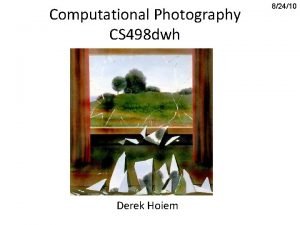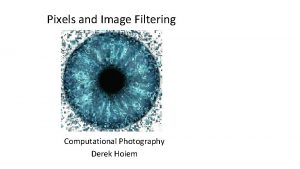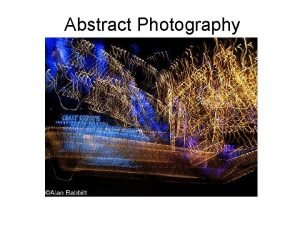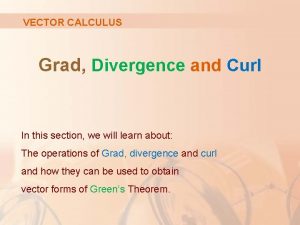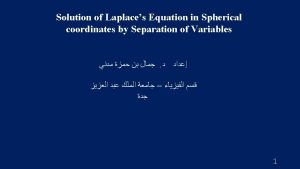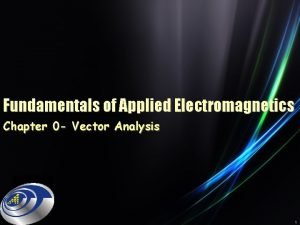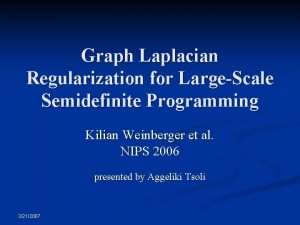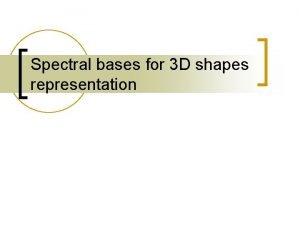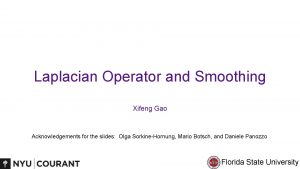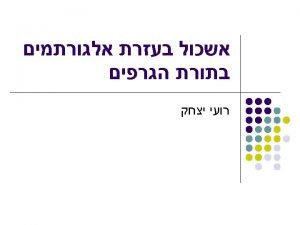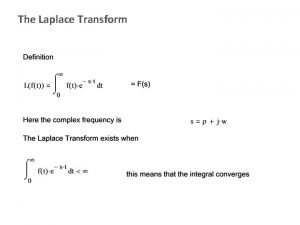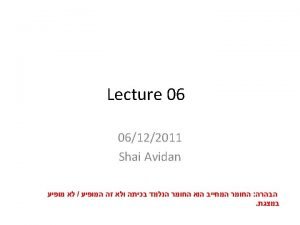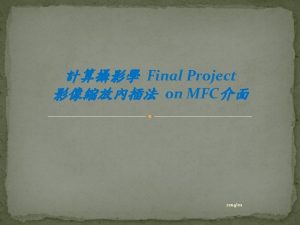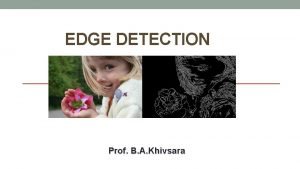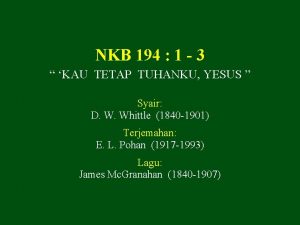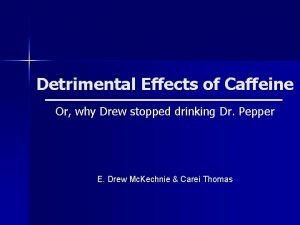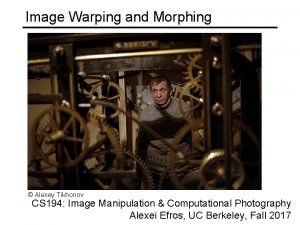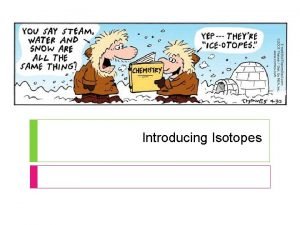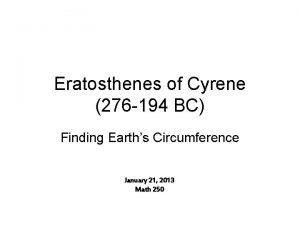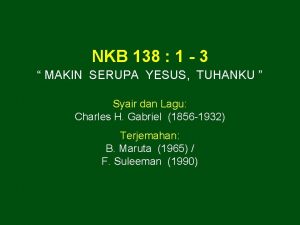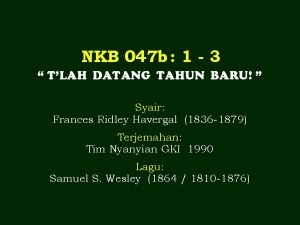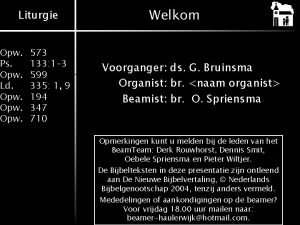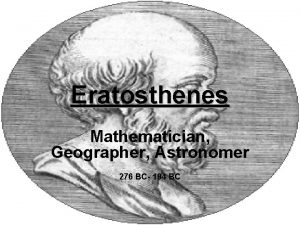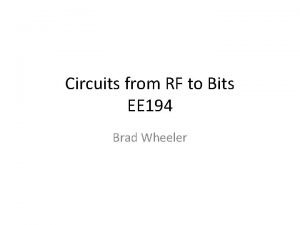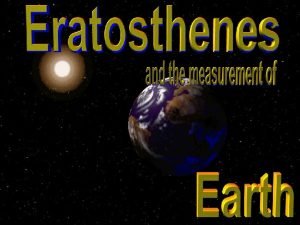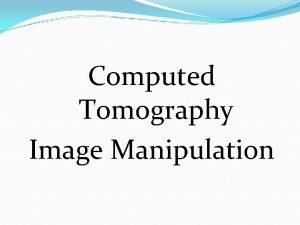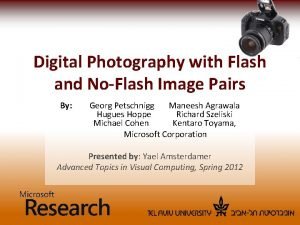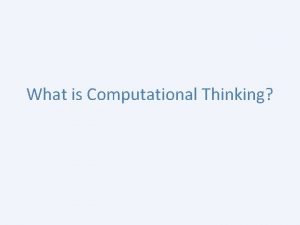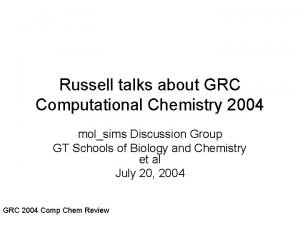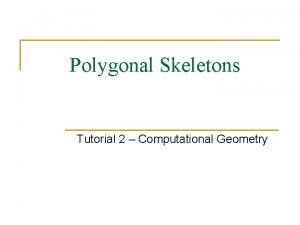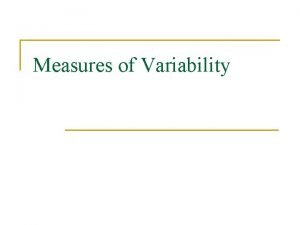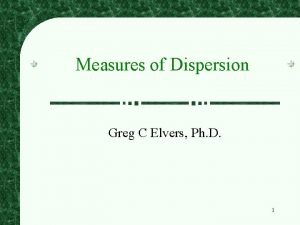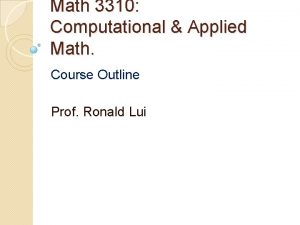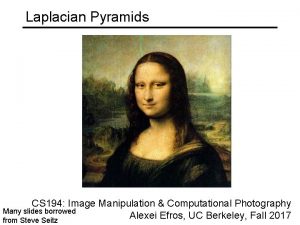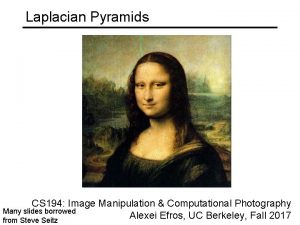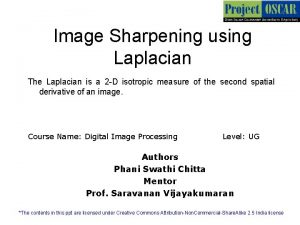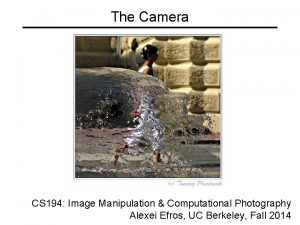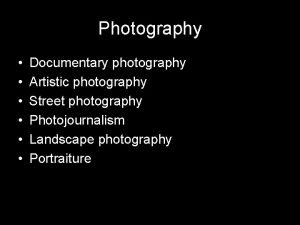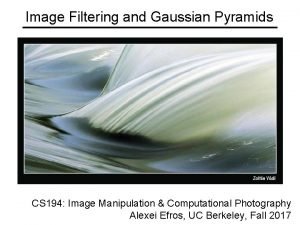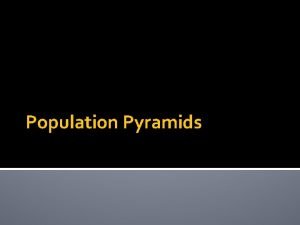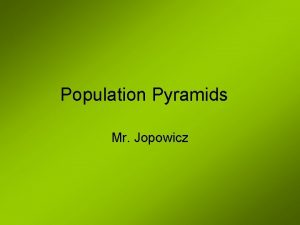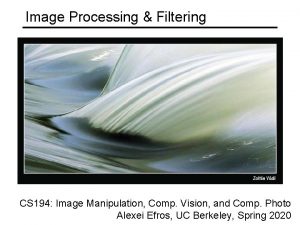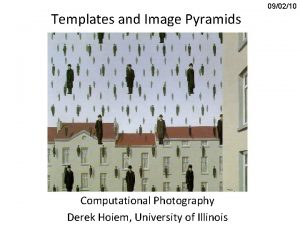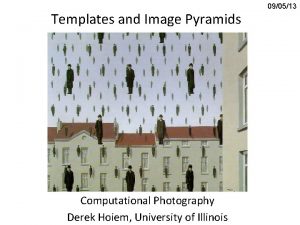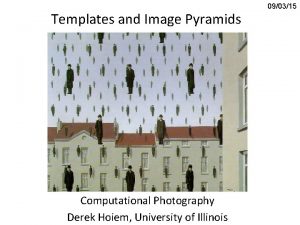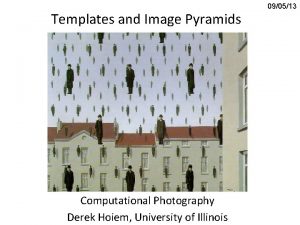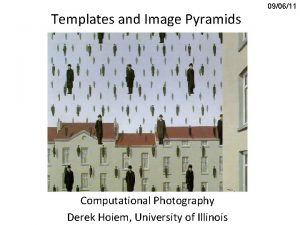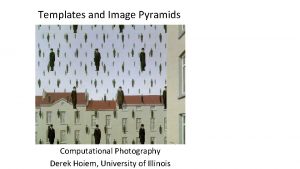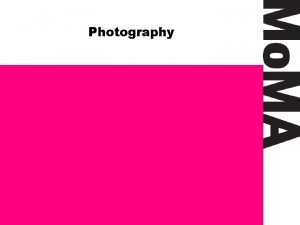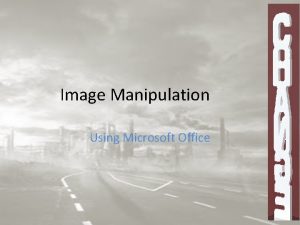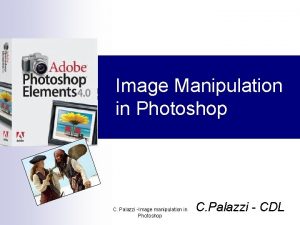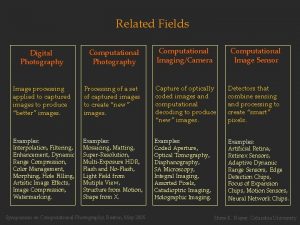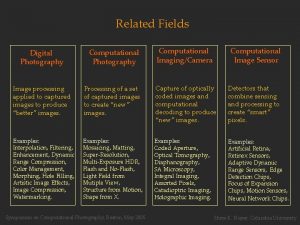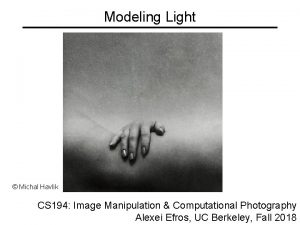Laplacian Pyramids CS 194 Image Manipulation Computational Photography









































- Slides: 41

Laplacian Pyramids CS 194: Image Manipulation & Computational Photography Many slides borrowed Alexei Efros, UC Berkeley, Fall 2017 from Steve Seitz

Low-pass, Band-pass, High-pass filters low-pass: High-pass / band-pass:

Edges in images

What does blurring take away? original

What does blurring take away? smoothed (5 x 5 Gaussian)

High-Pass filter smoothed – original

Image “Sharpening” What does blurring take away? – = detail smoothed (5 x 5) original Let’s add it back: +α original = detail sharpened

Unsharp mask filter image unit impulse (identity) blurred image Gaussian Laplacian of Gaussian

Hybrid Images Gaussian Filter! A. Oliva, A. Torralba, P. G. Schyns, “Hybrid Images, ” SIGGRAPH 2006 Laplacian Filter! unit impulse Gaussian Laplacian of Gaussian

Salvador Dali “Gala Contemplating the Mediterranean Sea, which at 30 meters becomes the portrait of Abraham Lincoln”, 1976

Band-pass filtering Gaussian Pyramid (low-pass images) Laplacian Pyramid (subband images) Created from Gaussian pyramid by subtraction

Laplacian Pyramid Need this! Original image How can we reconstruct (collapse) this pyramid into the original image?

Blending

Alpha Blending / Feathering + 1 0 Iblend = a. Ileft + (1 -a)Iright =

Affect of Window Size 1 left 1 right 0 0

Affect of Window Size 1 1 0 0

Good Window Size 1 0 “Optimal” Window: smooth but not ghosted

What is the Optimal Window? To avoid seams • window = size of largest prominent feature To avoid ghosting • window <= 2*size of smallest prominent feature Natural to cast this in the Fourier domain • largest frequency <= 2*size of smallest frequency • image frequency content should occupy one “octave” (power of two) FFT

What if the Frequency Spread is Wide FFT Idea (Burt and Adelson) • Compute Fleft = FFT(Ileft), Fright = FFT(Iright) • Decompose Fourier image into octaves (bands) – Fleft = Fleft 1 + Fleft 2 + … • Feather corresponding octaves Flefti with Frighti – Can compute inverse FFT and feather in spatial domain • Sum feathered octave images in frequency domain Better implemented in spatial domain

Octaves in the Spatial Domain Lowpass Images Bandpass Images

Pyramid Blending 1 0 1 0 Left pyramid blend Right pyramid

Pyramid Blending

laplacian level 4 laplacian level 2 laplacian level 0 left pyramid right pyramid blended pyramid

Blending Regions

Laplacian Pyramid/Stack Blending General Approach: 1. Build Laplacian pyramid/stack LX and LY from images X and Y 2. Build a Gaussian pyramid/stack Ga from the binary alpha mask a 3. Form a combined pyramid/stack LBlend from LX and LY using the corresponding levels of GA as weights: • LBlend(i, j) = Ga(I, j, )*LX(I, j) + (1 -Ga(I, j))*LY(I, j) 4. Collapse the LBlend pyramid/stack to get the final blended image

Horror Photo © david dmartin (Boston College)

Results from this class (fall 2005) © Chris Cameron

Simplification: Two-band Blending Brown & Lowe, 2003 • Only use two bands: high freq. and low freq. • Blends low freq. smoothly • Blend high freq. with no smoothing: use binary alpha

2 -band “Laplacian Stack” Blending Low frequency (l > 2 pixels) High frequency (l < 2 pixels)

Linear Blending

2 -band Blending

Da Vinci and Peripheral Vision https: //en. wikipedia. org/wiki/Speculations_about_Mona_Lisa#Smile

Leonardo playing with peripheral vision Livingstone, Vision and Art: The Biology of Seeing

Clues from Human Perception Early processing in humans filters for various orientations and scales of frequency Perceptual cues in the mid frequencies dominate perception When we see an image from far away, we are effectively subsampling it Early Visual Processing: Multi-scale edge and blob filters

Frequency Domain and Perception Campbell-Robson contrast sensitivity curve

Lossy Image Compression (JPEG) Block-based Discrete Cosine Transform (DCT)

Using DCT in JPEG The first coefficient B(0, 0) is the DC component, the average intensity The top-left coeffs represent low frequencies, the bottom right – high frequencies

Image compression using DCT Quantize • More coarsely for high frequencies (which also tend to have smaller values) • Many quantized high frequency values will be zero Encode • Can decode with inverse dct Filter responses Quantization table Quantized values

JPEG Compression Summary Subsample color by factor of 2 • People have bad resolution for color Split into blocks (8 x 8, typically), subtract 128 For each block a. Compute DCT coefficients b. Coarsely quantize – Many high frequency components will become zero c. Encode (e. g. , with Huffman coding) http: //en. wikipedia. org/wiki/YCb. Cr http: //en. wikipedia. org/wiki/JPEG

Block size in JPEG Block size • small block – faster – correlation exists between neighboring pixels • large block – better compression in smooth regions • It’s 8 x 8 in standard JPEG

JPEG compression comparison 89 k 12 k
 Computational photography uiuc
Computational photography uiuc Computational photography uiuc
Computational photography uiuc Is abstract photography same as conceptual photography
Is abstract photography same as conceptual photography Curl formula in spherical coordinates
Curl formula in spherical coordinates Spherical coordinates formula
Spherical coordinates formula Laplacian of a vector
Laplacian of a vector Nonlinear image processing
Nonlinear image processing Graph laplacian regularization
Graph laplacian regularization Laplacian operator
Laplacian operator Xifeng gao
Xifeng gao Lnxn
Lnxn Laplace transform of t
Laplace transform of t Laplacian of gaussian
Laplacian of gaussian Laplacian pyramid
Laplacian pyramid Laplacian of gaussian
Laplacian of gaussian Nkb 194
Nkb 194 Caffeine has a molecular weight of 194
Caffeine has a molecular weight of 194 Cs 194
Cs 194 Cs 194-26
Cs 194-26 Nasilje u porodici clan 194
Nasilje u porodici clan 194 Sudahkah yang terbaik kuberikan
Sudahkah yang terbaik kuberikan What does the number represent in the isotope platinum-194
What does the number represent in the isotope platinum-194 276-194
276-194 Yeus138
Yeus138 T'lah datang tahun baru
T'lah datang tahun baru Opwekking 194
Opwekking 194 194 bc
194 bc Razavi
Razavi 276-194
276-194 General image manipulation program
General image manipulation program Manipulation
Manipulation Gnu image manipulation program
Gnu image manipulation program Digital photography with flash and no-flash image pairs
Digital photography with flash and no-flash image pairs Characteristics of computational thinking
Characteristics of computational thinking Computational thinking algorithms and programming
Computational thinking algorithms and programming Grc computational chemistry
Grc computational chemistry Using mathematics and computational thinking
Using mathematics and computational thinking Straight skeleton algorithm
Straight skeleton algorithm Usc neuroscience minor
Usc neuroscience minor Standard deviation computational formula
Standard deviation computational formula Semi interquartile range
Semi interquartile range Computational math
Computational math
